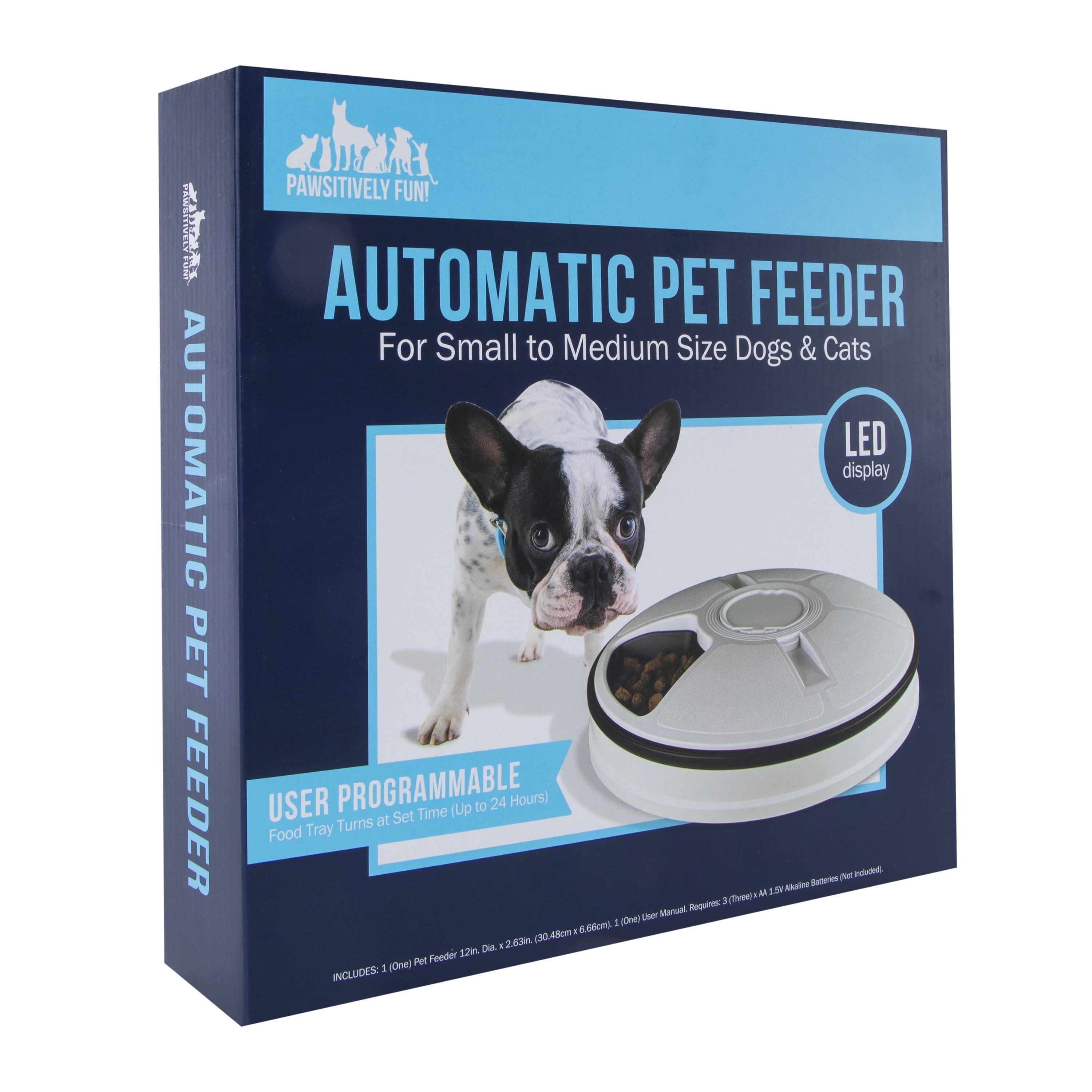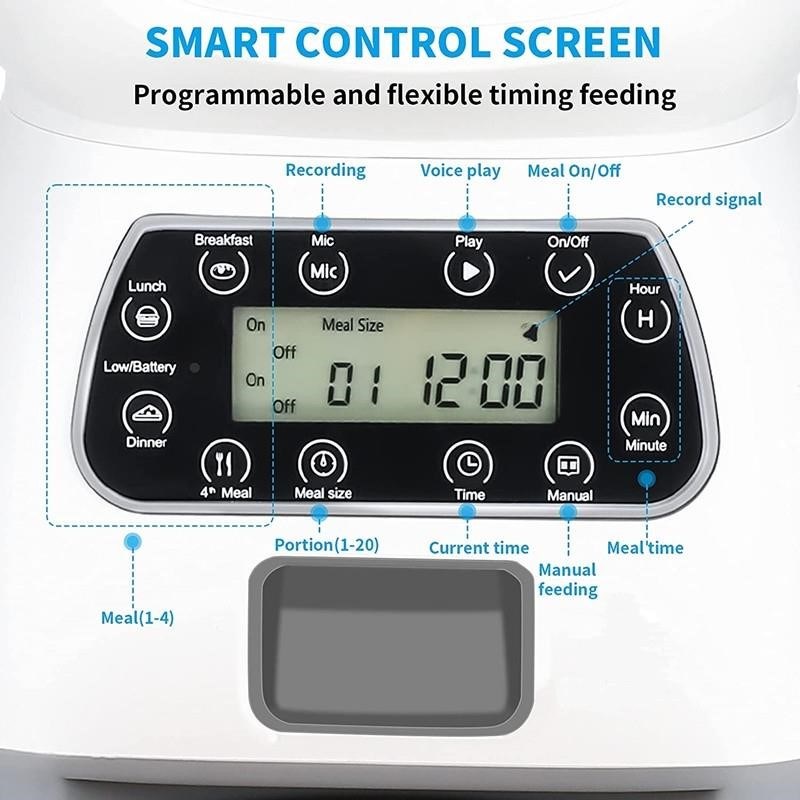
automatic pet feeder manual pdf
Automatic Pet Feeder Manual PDF⁚ A Comprehensive Guide
This comprehensive guide provides detailed instructions for setting up, operating, and maintaining your automatic pet feeder. Learn about programming feeding schedules, utilizing voice recording features, and troubleshooting common issues. Safety precautions, battery installation, cleaning, and understanding the LCD display are also covered. Discover information on various feeder models and find resources for additional support.
Setting Up Your Automatic Pet Feeder
Begin by carefully reading the included manual before operating your new automatic pet feeder. Ensure the feeder is placed on a stable, level surface, away from direct sunlight, moisture, and extreme temperatures (above 0°C/32°F). Avoid locations where the feeder could fall or be easily pulled. Power up the feeder using the specified batteries (usually alkaline D-cells or a provided power adapter). The LED display will likely guide you through the initial setup process. This usually involves setting the time, which might require selecting a 12-hour or 24-hour format using buttons on the device. Refer to your specific model’s instructions for precise button functions. After time setup, you’ll be prompted to program feeding schedules and portion sizes. Some models include a voice recording feature, allowing you to personalize feeding time with a short message for your pet. Always ensure the feeder is securely locked to prevent accidental opening or tampering. If you encounter any difficulties during setup, consult the troubleshooting section of your manual or seek online support from the manufacturer.
Programming Feeding Schedules and Portions
Programming your automatic pet feeder involves setting the times and amounts of food dispensed. Most feeders use buttons and an LCD screen to navigate the programming menu. You’ll typically set the time of day for each feeding, the number of days the schedule repeats (daily, weekly, etc.), and the portion size; Portion size is often measured in cups, ounces, or by the number of rotations of the dispensing mechanism. Consult your manual for details on how your specific model measures portions. Some advanced feeders allow you to create multiple feeding schedules for different days or times of the week. Others offer the ability to manually dispense food using a button, useful for supplemental feedings or treats. Always ensure you’re using the correct type and amount of pet food recommended by the manufacturer to avoid malfunctions. Avoid using excessively large or small kibble, as this can affect the accuracy of the portion control mechanism. After programming, confirm your settings on the LCD display before leaving the feeder unattended. Remember to regularly check food levels to avoid running out of food unexpectedly.
Using Voice Recording Features
Many modern automatic pet feeders include a voice recording feature, allowing you to leave a personalized message for your pet. This feature adds a comforting element to feeding time, especially when you’re away from home. To use this feature, locate the microphone icon on your feeder’s control panel or within the accompanying app (if applicable). Press and hold the designated button to begin recording. Speak clearly and calmly, using a reassuring tone. Most feeders allow recordings of up to 10 seconds. After recording, a confirmation beep or visual cue usually indicates successful recording. Some feeders play the recording immediately after dispensing food; others may only play the recording at a designated time. Consult your feeder’s manual for specific instructions. The quality of the recording may vary depending on the microphone’s sensitivity and background noise. Avoid loud or jarring sounds in the background. Regularly test the recording to ensure it’s clear and audible. If you experience issues with the voice recording, check your feeder’s manual for troubleshooting steps. Re-recording the message may be necessary if the initial attempt is unsuccessful. Remember, the voice recording is a supplementary feature; it does not replace the need for proper food and water provision.
Troubleshooting Common Issues
Should your automatic pet feeder malfunction, consult this troubleshooting guide. If the feeder isn’t dispensing food, first check the power source – ensure batteries are fresh or the AC adapter is correctly plugged in. Verify that food is properly loaded and isn’t obstructing the dispensing mechanism. Inspect the dispensing mechanism itself for any blockages; foreign objects or clumped food can impede operation. If the feeder’s LCD display shows an error code, refer to your manual’s troubleshooting section for specific solutions. Error codes often indicate low battery levels, programming errors, or mechanical issues. If the scheduled feeding times aren’t working, double-check the programming settings. Incorrect time settings or improperly configured schedules are common causes of feeding irregularities. If the feeder is making unusual noises, it might indicate a mechanical problem requiring professional attention. Avoid attempting complex repairs yourself unless you have the technical expertise. Cleaning the feeder regularly can prevent many issues. Accumulated food debris can lead to malfunctions. If problems persist after following these steps, contact the manufacturer’s customer support for assistance. They can offer specialized troubleshooting advice and potentially arrange repairs or replacements under warranty. Remember to always handle the feeder with care to avoid accidental damage.

Maintaining Your Automatic Pet Feeder
Regular maintenance ensures your automatic pet feeder functions optimally and extends its lifespan. Begin by cleaning the food hopper regularly. Remove any leftover food, crumbs, or debris to prevent mold growth and ensure the smooth dispensing of kibble. Wipe down the interior and exterior surfaces with a damp cloth, avoiding excessive moisture. Never submerge the feeder in water. Periodically inspect the dispensing mechanism for any signs of wear or damage. Look for broken parts, obstructions, or anything that might hinder its operation. Clean the dispensing chute thoroughly to remove any accumulated food particles. Check the battery compartment for corrosion or leakage. If you notice any signs of corrosion, clean it carefully with a dry cloth. Replace batteries promptly when the low battery indicator appears. This prevents unexpected interruptions in feeding schedules. For feeders with a removable food bowl, wash it separately with soap and warm water. Dry all components completely before reassembling the feeder. Avoid using harsh chemicals or abrasive cleaners. Refer to your manufacturer’s instructions for specific cleaning recommendations. Regular maintenance not only ensures your pet receives food consistently but also prevents potential health hazards associated with spoiled food or a malfunctioning feeder. A well-maintained feeder provides peace of mind, knowing your pet is well cared for.
Safety Precautions and Warnings
Prioritize safety when using your automatic pet feeder. Never leave the device unattended for extended periods, especially with pets prone to chewing or tampering. Always supervise your pet during the initial use of the feeder to ensure they understand how it works and avoid accidental injuries. Position the feeder on a stable, level surface away from direct sunlight, heat sources, or damp areas. Extreme temperatures can damage the device and affect its functionality. Avoid placing it near water sources or in areas where it might be easily knocked over. Never attempt to repair or modify the feeder yourself. Contact the manufacturer or a qualified technician for repairs. Regularly inspect the power cord (if applicable) for any signs of damage, such as fraying or cracking; If you notice any damage, discontinue use immediately and contact the manufacturer. Use only the recommended power adapter or batteries specified in the manual. Using incorrect power sources can damage the device and pose a safety risk. Keep the device away from children and pets who might attempt to play with it or damage its components. Always unplug the feeder before cleaning or performing any maintenance. Store the device properly when not in use, protecting it from moisture and extreme temperatures. Never insert foreign objects into the feeder’s openings. This could damage the internal mechanisms and create a safety hazard. Read and understand all instructions before use. Adherence to these safety precautions safeguards both your pet and the longevity of your automatic pet feeder.

Battery Installation and Power Options
Your automatic pet feeder offers flexibility in power options, catering to various user preferences and circumstances. Some models operate using AC power, requiring a direct connection to a wall outlet. If your model uses an AC adapter, ensure it’s correctly plugged into both the feeder and the wall socket. Always use the supplied power adapter to prevent damage to the device. Other models utilize batteries, typically alkaline D or C cells, depending on the specific model. Refer to your user manual for the exact battery type and quantity required. Before installing batteries, ensure they are correctly oriented as indicated within the battery compartment. Incorrect placement can cause damage to the device or even lead to battery leakage. When installing batteries, firmly push them into place until they securely click into the designated slots. Avoid forcing them, as this could damage the battery contacts. Regularly check battery levels, especially if you notice a decrease in functionality. Replace batteries promptly when they are depleted to avoid interruptions in feeding schedules. Some models offer a combination of AC power and battery backup, ensuring uninterrupted operation even during power outages. In such cases, ensure both the AC adapter and batteries are correctly installed. If using batteries, remember to dispose of them responsibly following local regulations. Improper disposal can harm the environment. Always consult your user manual for specific instructions on battery installation and usage for your particular model of automatic pet feeder. Adhering to these guidelines guarantees optimal performance and longevity of your pet feeder.
Cleaning and Hygiene
Maintaining cleanliness is crucial for ensuring the safe and hygienic operation of your automatic pet feeder. Regular cleaning prevents the buildup of food residue, mold, and bacteria, protecting your pet’s health. Before cleaning, always unplug the power adapter or remove the batteries to prevent electrical hazards. Begin by removing all food from the feeder’s reservoir. Discard any stale or spoiled food. Use a soft, damp cloth or sponge to wipe down the exterior surfaces of the feeder, paying attention to crevices and corners where food particles may accumulate. Avoid using harsh chemicals or abrasive cleaners, as these can damage the feeder’s surface and potentially leach harmful substances into the food. For thorough cleaning, disassemble the feeder components as instructed in your user manual. Wash detachable parts, such as the food hopper and feeding mechanism, with warm, soapy water. Rinse thoroughly and allow them to air dry completely before reassembling. Periodically, deep clean the feeder by using a mild disinfectant solution, following the manufacturer’s recommendations. Make sure the disinfectant is pet-safe before using it. Always rinse the feeder thoroughly with clean water to remove all traces of disinfectant. Never submerge the feeder in water unless explicitly stated in your user manual. After cleaning, reassemble the feeder components and ensure they are correctly secured. Regular cleaning, ideally once a week or as needed, will maintain the hygiene of your pet feeder and contribute to your pet’s well-being. Always refer to your specific feeder’s user manual for detailed cleaning instructions.
Understanding LCD Display and Controls
The LCD display on your automatic pet feeder serves as the central interface for programming and monitoring its functions. Familiarizing yourself with the display’s various icons and indicators is crucial for effective operation; The display typically shows the current time, feeding schedule, and remaining food level. Some models may also display battery level, error messages, and other relevant information. The controls usually consist of buttons for navigating menus, adjusting settings, and initiating feeding. These buttons might include up/down arrows for scrolling through options, a confirmation button to save changes, and a button to initiate manual feeding. The user manual will provide a detailed explanation of each button’s function and how to use them to program feeding schedules, portion sizes, and voice recordings. Understanding the LCD’s various sections and icons will allow you to easily monitor the feeder’s status and make adjustments as needed. Pay close attention to any error messages displayed, as these often indicate issues that require attention, such as low battery levels or malfunctions. Consult the troubleshooting section of your user manual for guidance on resolving any errors displayed on the LCD screen. Regularly checking the display will ensure that your pet feeder is functioning correctly and that your pet is receiving their meals as scheduled. Mastering the LCD display and controls will guarantee the smooth and reliable operation of your automatic pet feeder.
Different Feeder Models and Their Features
Automatic pet feeders come in a variety of models, each with its own set of features and capabilities. Understanding these differences is crucial in selecting the right feeder for your pet’s needs and your lifestyle. Capacity is a key consideration; some models hold only a small amount of food, suitable for smaller pets or shorter absences, while others boast larger capacities for longer periods without refilling. Feeding mechanisms vary; some use gravity-fed dispensers, while others employ more sophisticated systems like rotating bowls or auger mechanisms for precise portion control. Smart features are increasingly common, including Wi-Fi connectivity, allowing for remote monitoring and control via a smartphone app. These apps often allow for customized feeding schedules, portion sizes, and even voice recording to call your pet to their meal. Some models incorporate scales to ensure precise food dispensing, helping to maintain your pet’s weight and health. Additional features can include multiple feeding compartments for different types of food, battery backup systems for power outages, and even cameras to monitor your pet during feeding times. Consider factors like your pet’s size, dietary needs, your budget, and your technological comfort level when choosing a model. Before purchasing, carefully review the specifications and features of different models to find the best fit for your individual circumstances. Remember to consult online reviews and compare features to make an informed decision. The right feeder will depend on your specific pet’s needs and your preferences.
Related Posts

financial accounting spiceland 6th edition pdf
Need the Spiceland Financial Accounting 6th Edition PDF? Get instant access to clear explanations & practice problems. Ace your course with ease! ✨

pdf to ofx converter online free
Easily convert PDF files to OFX format online for free. No registration required, fast and secure conversion.

tu zona crypto book pdf
Dive into the world of cryptocurrency with our expert guide. Discover tips, tricks, and strategies for success in crypto trading and investing.